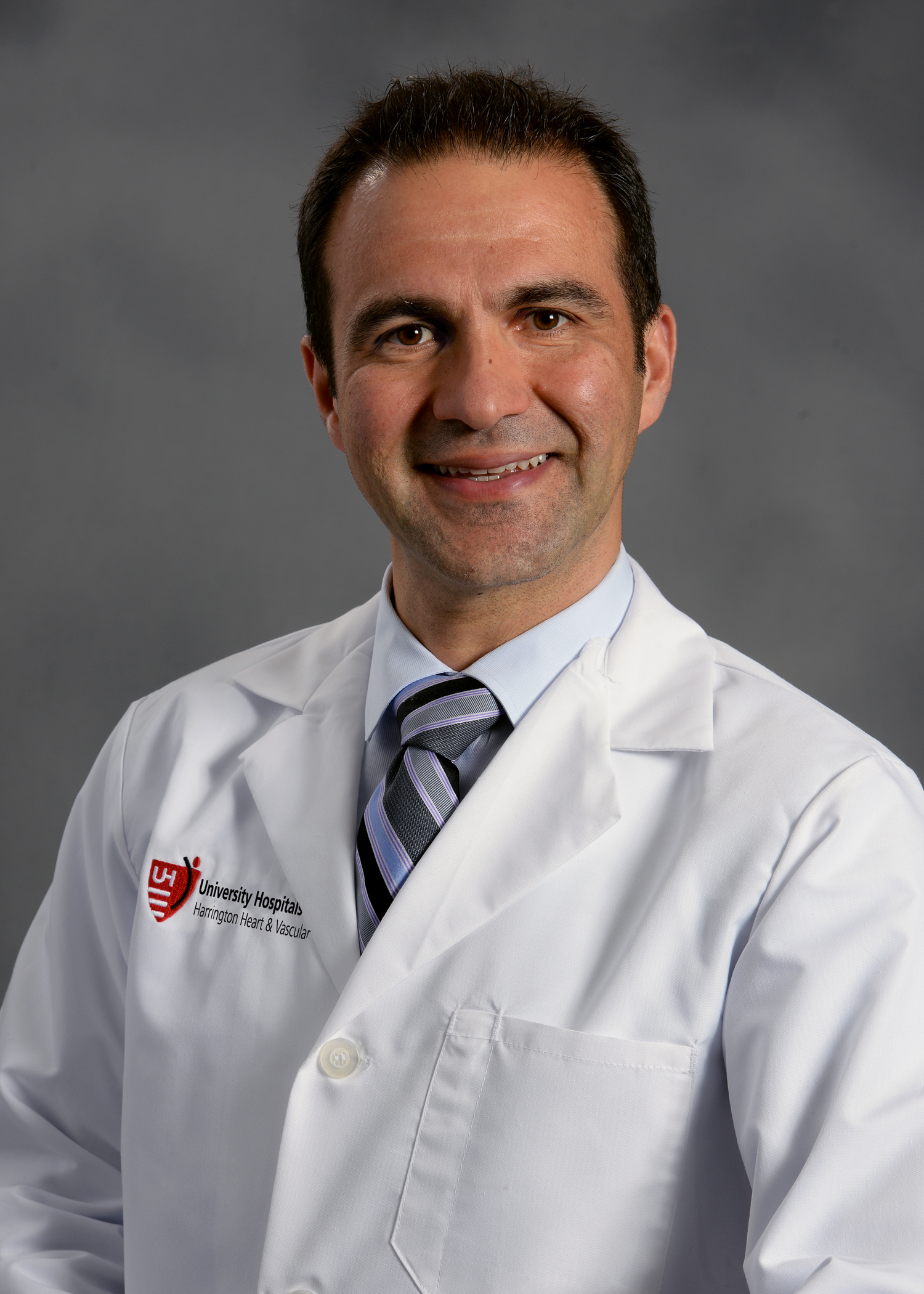Avoiding Limb Loss
August 23, 2017
Patients with critical limb ischemia (CLI) benefit from UH limb salvage program devoted to leading-edge research
Harrington Heart & Vascular Institute Innovations – Summer 2017
 Mehdi H. Shishebor, DO, MPH, PHD
Mehdi H. Shishebor, DO, MPH, PHDCritical limb ischemia (CLI) remains one of the most challenging conditions in cardiovascular medicine, with significant morbidity, mortality and utilization of healthcare resources. At University Hospitals Harrington Heart & Vascular Institute, interventional cardiologist Mehdi H. Shishehbor, DO, MPH, PhD, Director, Interventional Cardiovascular Center, and Co-Director, Vascular Center, University Hospitals Harrington Heart & Vascular Institute; Clinical Assistant Professor of Medicine, Case Western Reserve University School of Medicine is attacking the problem from many angles. New to UH from Cleveland Clinic, Dr. Shishehbor is an international expert on minimally invasive approaches to reconstruct lower extremity arteries in order to treat CLI and prevent amputation.
According to Dr. Shishehbor, an important key to more successful outcomes in CLI is educating healthcare providers about the new, often minimally invasive options that are available for patients. Unfortunately, studies show that many people with CLI undergo an amputation without even having a vascular assessment.
“We are working hard to educate both patients and caregivers of importance of revascularization in patients with CLI at risk of limb loss,” he says. “Here at UH, we have established multidisciplinary teams of internists, podiatrists, vascular medicine specialists, vascular surgeons and interventional cardiologists to collectively tackle the gap in knowledge and prevent amputation. Importantly, we are also designing an Amputation Prevention Board (APB) that will review each patient’s case before undergoing major amputation. This is a multidisciplinary board.”
A commitment to research is also integral to improving CLI outcomes, Dr. Shishehbor says. To that end, he is the national principal investigator for the STOP-PAD trial, scheduled to conclude in November 2017. The randomized, double-blind, placebo-controlled trial is evaluating the effectiveness of a novel biologic wound treatment known as stromal cell-derived factor 1 (SDF-1). Dr. Shishehbor is also the national principal investigator on the multinational “Chocolate Touch” study comparing an investigational drug-coated balloon catheter with the current FDA-approved standard device. These devices are used in above-the-knee superficial femoral arteries in patients with intermittent claudication or ischemic rest pain.
In addition, Dr. Shishehbor is deeply involved in research to gather safety and efficacy data on devices already approved for CLI by the U.S. Food and Drug Administration. He’s collecting prospective data on procedural outcomes of Cardiva Medical’s VASCADE vascular closure system. This system is used to manage patients who’ve had a femoral access following a percutaneous procedure via an antegrade approach. The post-market patient registry is the only study prospectively evaluating the device. Dr. Shishehbor is also the national principal investigator conducting a post-market, prospective study of the Phoenix atherectomy system, manufactured by the Volcano Corporation.
“These post-market studies are extremely important because they teach us about the safety and efficacy of these novel device in the real world population,” he says.
Another area of research for Dr. Shishehbor is the development and testing of devices to better diagnose CLI.
“We have shown in a series of articles that the most commonly used test to diagnose CLI, the ankle brachial index (ABI), is inaccurate in 30 percent of patients. We were the first group to show that,” he says. “While toe pressure is more accurate, a series of novel devices have been developed and are under investigation. They include lasers, microsensors, indocyanide green and near-infrared spectroscopy. Each method has advantages and disadvantages, and we are evaluating these techniques at the present time.”
With all these projects, the goal is the best possible outcomes for CLI patients and to improve the limb salvage program.
“While avoiding amputation is important, we are moving beyond that to better understand how best we can heal wounds as quickly as possible,” Dr. Shishehbor. “We have shown that persistent wounds are associated with major adverse limb events and readmissions. Furthermore, they are associated with increased cost and lower quality of life. So strategies that improve healing are desperately needed. That’s our focus.”
For more information on services for patients with CLI or to make a referral, please call 216-844-3800.


